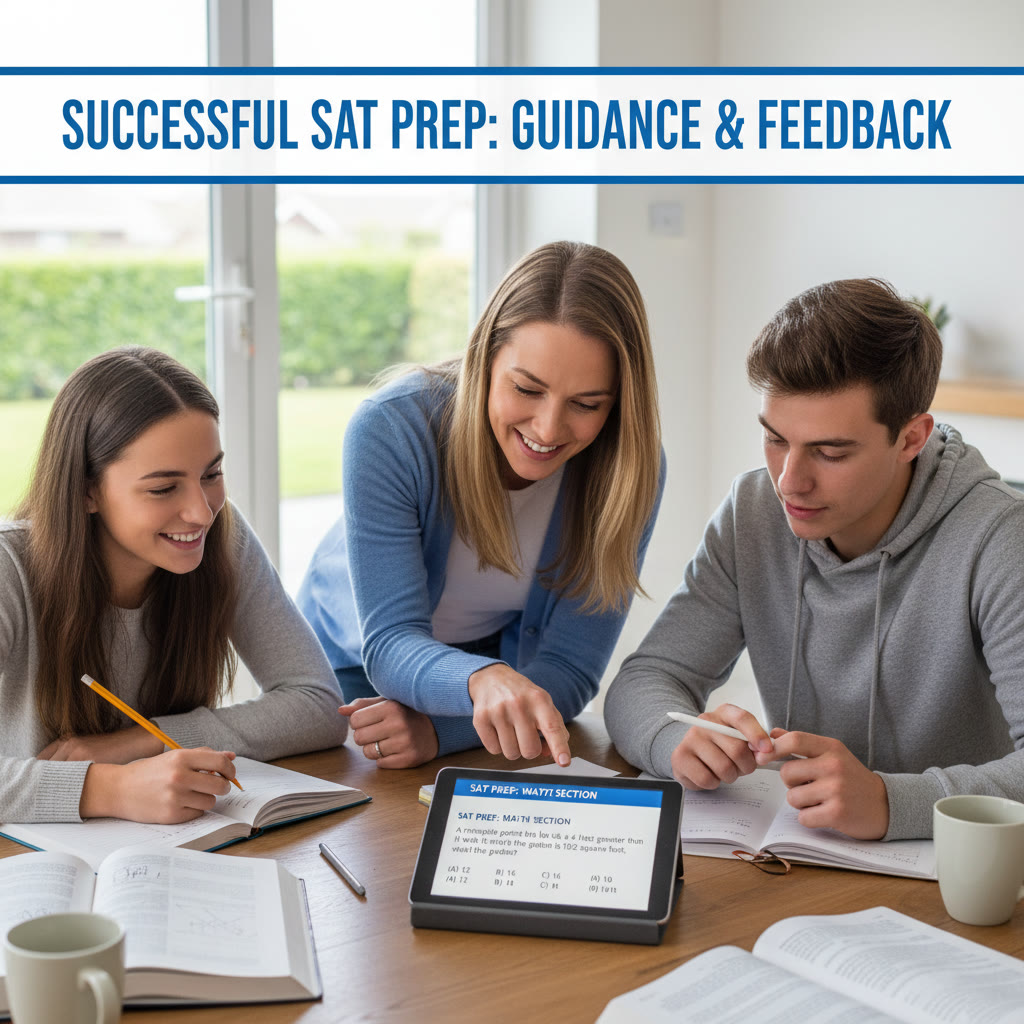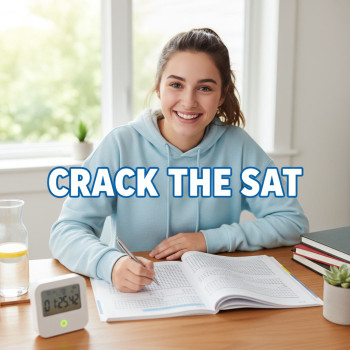Why this matters: the SAT and business school dreams
For many families, applying to top undergraduate business programs in the U.S. feels like navigating a changing map. Between test-optional policies, evolving admissions priorities, and the Digital SAT’s arrival, the question on every student’s and parent’s mind is simple but crucial: Do I need to take the SAT — and if I do, what score will make my application competitive?

Understanding the landscape: test-optional vs test-required
First, a reality check: many colleges — including several top schools with strong business programs — have adopted test-optional policies in recent years. “Test-optional” means you can decide whether to submit SAT scores. But that headline doesn’t tell the whole story. Policies vary: some programs within a university may still request scores for scholarship consideration, program placement, or specific majors (like finance, actuarial science, or combined degree programs). A few schools continue to require scores, and others may be test-blind for admissions while accepting scores for placement.
So the core takeaway: test-optional doesn’t always mean “don’t take the test.” It means “take the test if it strengthens your story.”
Why you might still take the SAT
- To keep options open — you can always choose whether to send scores.
- To qualify for merit scholarships that still use SAT/ACT as a screening metric.
- To showcase academic readiness if your GPA or course rigor doesn’t fully reflect your potential.
- To stand out in a large applicant pool for competitive business programs.
What top business programs look for (beyond the SAT)
Admissions committees in business schools consider a mosaic of factors: grades, course rigor (especially in math), recommendation letters, extracurricular leadership (DECA, investment clubs, entrepreneurship projects), essays, and demonstrated interest. The SAT is one tile in that mosaic. A strong SAT can enhance your application, but admissions officers rarely treat it as the sole deciding factor.
In short: think of the SAT as an amplifier, not a replacement. If the rest of the application is compelling, a solid SAT score can boost your narrative. If your score is below a program’s typical range, you’ll want to show strength elsewhere.
What counts as a competitive SAT score for top business programs?
There’s no single “magic number” that guarantees admission — different schools and programs have different average ranges. However, competitive programs tend to attract applicants with SAT scores in the upper percentiles. Instead of chasing an exact number, use these practical strategies:
- Look at the middle 50% SAT range published by each college for admitted students; try to be at or above the 50th percentile for your target schools.
- If you’re aiming at the most selective business programs, targeting the 75th percentile of admitted students gives you a buffer.
- Consider program-specific expectations: select majors (e.g., quantitative finance) often have higher unofficial expectations for math performance.
To make this concrete, here’s a simple comparative table illustrating hypothetical target ranges for a sample of program tiers (these are general examples to guide planning):
| Program Tier | Target SAT Range (Competitive) | When to Submit |
|---|---|---|
| Most Selective (e.g., top 10 national business programs) | 1400–1600 | Submit if you’re at or above the 50th percentile; stronger if near 75th+ |
| Top 50 National | 1300–1480 | Submit if score exceeds school’s middle 50% or improves scholarship chances |
| Selective Regional / Strong State Programs | 1200–1360 | Submit if it strengthens academic profile; helpful for merit awards |
| Breadth-Focused or Holistic Programs | 1100–1300 | Submit selectively — only if it improves your application balance |
Remember that these ranges are planning tools, not guarantees. The right choice depends on how your SAT sits relative to the specific colleges on your list.
How business programs use SAT scores
Even when schools are test-optional, admissions offices often use scores in nuanced ways:
- Contextual evaluation — scores are considered alongside GPA, course rigor, school profile, and personal circumstances.
- Scholarship screening — many merit awards still use test scores as an objective filter.
- Placement or advising — scores can inform first-year course placement or support services.
So a high SAT can unlock scholarship dollars or better placement in honors-level first-year courses that matter to business students.
Superscoring and Score Choice
A helpful piece of modern test strategy is superscoring (combining the best section scores from multiple test dates). Many institutions will superscore the SAT, but some require all your scores. Use the College Board’s score-sending options to control which dates and scores colleges receive. If you’re working with a tutor or counselor, plan test dates and send decisions strategically.
Deciding whether to submit your SAT score: a decision checklist
Before you hit “send,” run through this checklist. It’s practical, fast, and forces you to weigh how your score fits with the rest of your application.
- Is your score at or above the college’s published 50th percentile? If yes, consider sending.
- Will submitting your score strengthen scholarship eligibility? (Check financial aid pages.)
- Does your score add evidence of quantitative strength for a math-heavy major?
- If your GPA is unusually low for reasons beyond your control, can a strong SAT provide balancing evidence?
- Would your application narrative be stronger without standardized test data? If so, test-optional may benefit you.
Study strategy: when, how, and what to practice for the Digital SAT
The Digital SAT is different in format and experience from the paper test, so preparation should be targeted. Focus on these pillars:
- Familiarity with the testing platform — practice on the same app or interface you’ll use on test day.
- Precision in timing — the digital format has shorter sections but often adaptive elements; practice pacing with digital practice tests.
- Targeted skills work — for business programs, the math/quantitative portions and evidence-based reading sections matter most.
- Practice with real, full-length digital tests and build one high-quality timed practice test into your weekly routine as the exam approaches.
Quality beats quantity: three focused, simulated digital tests per month (in the months leading up to the exam) plus targeted content practice will typically beat unfocused marathon studying.

Sparkl’s personalized tutoring: where a guided plan fits
If a student needs structure, feedback, or a tailored plan, personalized tutoring can be a powerful multiplier. Sparkl’s personalized tutoring model — one-on-one guidance, tailored study plans, and expert tutors who adapt to each student’s strengths and gaps — helps students translate practice into score gains. What makes targeted tutoring effective for business-program hopefuls is the emphasis on quantitative reasoning, data interpretation, and real-world problem solving — the exact skills top business programs value.
Used wisely, a short burst of focused 1-on-1 tutoring can produce measurable improvements in confidence and scores because it adapts to the student’s learning pace and provides immediate, actionable feedback. Tutors who bring AI-driven insights can identify patterns across practice tests and make the study plan smarter and faster.
Application strategy for different student profiles
Let’s walk through realistic, practical approaches depending on where you stand as an applicant.
1) High GPA, moderate SAT
Scenario: A student has a strong GPA and leadership in business-related extracurriculars, but their SAT sits near the school’s median or slightly below.
- Recommendation: If the SAT is close to the school’s 50th percentile, submit it — the GPA and activities will carry weight, and a decent SAT won’t hurt. Consider one or two targeted tutoring sessions to push the score above median if scholarships are a priority.
- Emphasize: coursework rigor (AP/IB math/econ), internships, and leadership impact in essays and recommendations.
2) Strong SAT, weaker GPA
Scenario: A student has an SAT that outperforms their GPA.
- Recommendation: Submit your SAT. It provides objective evidence of academic potential. Use essays to explain external factors behind GPA and to highlight growth and work ethic.
- Emphasize: upward trajectory, improved performance in senior-year courses, and demonstrable skills (business competitions, online courses, entrepreneurship projects).
3) Test-optional with balanced profile
Scenario: Strong GPA, steady extracurriculars, but the student prefers not to submit a test score.
- Recommendation: Consider taking the test anyway. Try one official practice digital SAT to gauge where you land. If you score above a target threshold relevant to your schools, submit it.
- Emphasize: when you choose not to send scores, ensure essays and recommendations clearly communicate quantitative readiness.
Financial aid and scholarships: the SAT’s continuing value
Scholarship committees often use SAT and class rank as part of their initial filtering — this remains true in many institutions even with test-optional admissions. If you are seeking merit aid or program-specific scholarships (e.g., scholarships for students entering business or economics), a higher SAT can increase your chances for awards, reduce financial burdens, and free you to pursue internships and unpaid research that further strengthen your resume.
Practical timeline and testing schedule
A practical timeline reduces stress and creates clear milestones. Here’s a sample testing timeline for a student planning to apply in the fall of their senior year:
- Junior Year Spring (or earlier): Take an initial diagnostic digital SAT to identify baseline strengths and weaknesses.
- Summer before Senior Year: Intensive targeted prep — aim for a 4–8 week cycle of content work plus practice tests; consider tutoring for weak areas.
- Early Senior Year (Aug–Oct): Take a full official Digital SAT administration (or two if you want more practice under test conditions).
- Fall application season: Use your best score; consider one final test if you think a meaningful improvement is possible without disrupting application work.
How many times should I test?
Two to three well-planned test attempts are typical. Each attempt should come with a clear, focused study goal (e.g., adding +40–80 points by improving a specific content area and reducing careless errors) rather than frequent undirected testing.
Common mistakes and how to avoid them
- Rushing to test without diagnostic practice — know where you stand first.
- Over-preparing on content and under-preparing on test strategy and timing.
- Failing to research program-specific requirements — some majors or scholarships still ask for scores.
- Letting test prep crowd out application work — balance is key during senior fall.
Putting it all together: a case study
Meet Maya (a composite profile). She wants a top business program, excels in math classes (AP Calculus BC), captains the investment club, but has a GPA that dipped sophomore year due to family illness. Her diagnostic digital SAT put her around the middle 50% of her target schools.
Plan:
- She takes a focused 6-week prep plan emphasizing evidence-based reading and math problem-solving with two full, timed digital practice tests per week.
- Maya uses 1-on-1 tutoring sessions to refine pacing and reduce careless mistakes on grid-in math items; her tutor uses practice-test analytics to tailor sessions.
- She sits for the official Digital SAT in October and improves by 90 points, replacing uncertainty with a clear score to submit.
- Because her SAT strengthens her case quantitatively, she qualifies for a merit scholarship at one of her target schools, improving her college choice options.
This is the kind of targeted, strategic work that turns uncertainty into options — and it’s the real value a short, strategic tutoring engagement can bring.
Final checklist for families
- Audit your college list: check each program for test policy, program-specific requirements, and scholarship rules.
- Run a diagnostic Digital SAT to set a baseline and realistic target.
- Create a study plan with measurable milestones: content goals, practice test dates, and review cycles.
- Decide on tutoring only if you need structure, targeted feedback, or accelerated improvement — short, focused tutoring (like Sparkl’s 1-on-1 programs) can be highly effective.
- Keep application balance: essays, recommendations, and demonstrated interest matter deeply for business programs.
Closing thoughts: strategy, not panic
Applying to top business programs can feel high-stakes, but it’s mostly a function of strategy, honesty, and preparation. The Digital SAT is a tool — powerful for some applicants, optional for others. Use it intentionally: get a baseline, set a realistic target, invest in quality preparation where it matters, and make your decision to submit scores based on how they sit within the broader story of your application.
And if you want help turning practice into progress, a short, personalized tutoring plan — one that focuses on the student’s unique weaknesses and builds measurable wins — can make all the difference. Sparkl’s 1-on-1 guidance, tailored study plans, expert tutors, and modern insights can help many students turn uncertainty into opportunity.
Want next steps?
Start with one diagnostic digital practice test under timed conditions. Share the results with your counselor or a trusted tutor, map a two- to three-month study plan focused on weak spots, and schedule at least one official test date that leaves room for a retake if needed. That simple, steady approach is how top applicants prepare — one intentional step at a time.
Good luck — your best application is the one built from strategy, clarity, and steady work. You’ve got this.














No Comments
Leave a comment Cancel